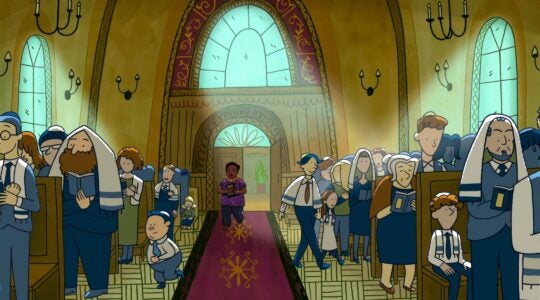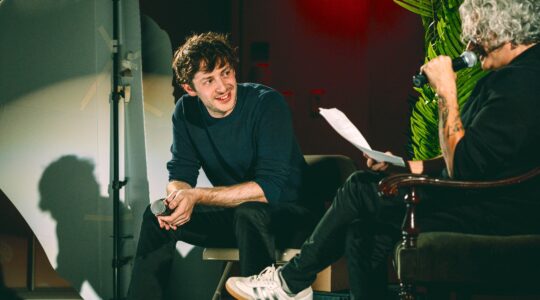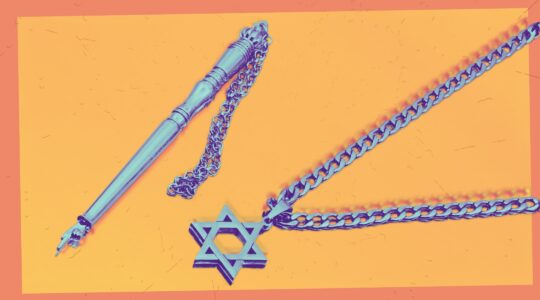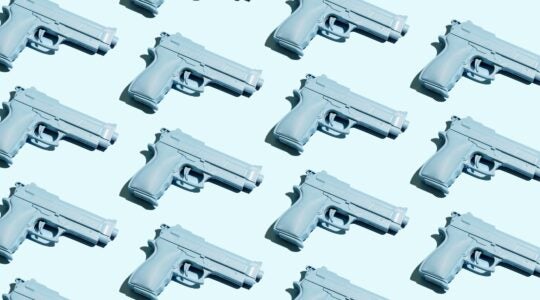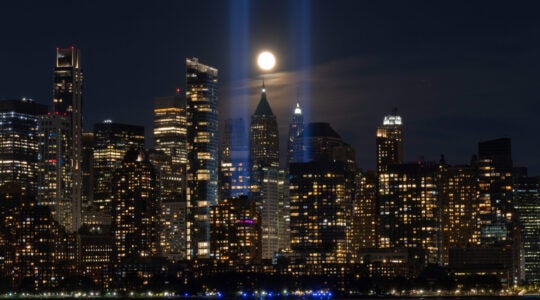As thrilled and honored as I was to represent my organization at the White House Chanukah Party on December 17, and be in the same room with the First Lady and President of the United States (and Gwyneth Paltrow apparently, though I sadly didn’t see her), I shared a particular pride with only a handful of others in the room. The rabbi leading the blessings during the menorah lighting for the 500-plus “machers,” as she called us, was born to an Asian mother and an Ashkenazi father — just like my son.
Rabbi Angela Buchdahl’s words moved me profoundly. She said this:
That tonight we, as a tiny religious minority, are able to celebrate our holiday with you in the White House is a miracle that we do not take for granted as the Jewish people. Our Founding Fathers aspired to build a country that was truly a place of religious freedom and equal opportunity for all people. But I have to predict that they could not have imagined that in 2014 there would be a female Asian-American rabbi lighting the menorah at the White House for an African-American president! I think they’d be surprised! … This country is a country of miracles.
Some might say that a mixed-race child of intermarriage becoming a rabbi (and cantor) at one of the largest and most important synagogues in the world is an “anomaly.” And while it’s apparent to anyone who even briefly hears Rabbi Buchdahl speak or sing that she is a unique and talented individual, I wouldn’t say anomaly. I’d use the word “vanguard.”
There will be many more. That’s because today there are more Jews under the age of 20 born to one Jewish parent than to two Jewish parents. In the non-Orthodox community, the majority of households are intermarried. We are the Jewish “norm” now.
Being part of a mixed-race couple, it’s impossible not to look for diversity at Jewish events, and the White House Hanukkah Party was a pleasant surprise in that my wife did not represent the only racial diversity. I presume we were also not the only interfaith couple, though that is harder to discern. I know of several children of intermarriage who were in the room. But in all cases, these groups were underrepresented. I predict that too will change.
Despite our growing numbers, there are those in the Jewish community who would continue to paint any intermarried involvement in Jewish life as the anomaly. They claim American Jews are “on the precipice of a demographic cliff, and the choice before them is simple: Either fall off, or turn around.”
In what epic tale does the hero reach a cliff and then just turn around, rather than making that great leap? That certainly hasn’t been the story of the Jews.
Those same doomsayers were making identical predictions twenty years ago. Yet the White House Chanukah Party that I attended was actually the second of the day because, as the President himself explained to the crowd, “We had so many friends to invite, we had to have two parties.”
The recent Pew Survey found more Jews in America today than at any time in history. And despite their high birthrates, Orthodox Jews still only represent 10 percent of the total, which is about where they were in 1990.
So why is there such an agreed-upon narrative of decline in the non-Orthodox Jewish community? And whose interests does it serve to continue bemoaning this speculative future, rather than celebrating our highly-achieving present?
It is true that institutionally, there is great change sweeping through the Jewish community. People do not affiliate in ways they did in the past. Younger generations want to create their own organizations and find their own expressions of Jewish meaning. Many Jewish movements started by earlier generations no longer resonate, in part because they could not address current demographic trends, or maybe they chose not to.
But it’s absurd to suggest that we can turn back from the demographic trends of intercultural, interreligious and interracial blending. Those are American trends, not just Jewish-American trends, and many people including myself believe such trends lead to a more tolerant, less racist society, including reduced anti-Semitism.
Those who want mixed households to disappear from the Jewish community continue to assure the Jewish community we’re about to disappear. Yet the Pew Survey found a million more Jews than the last time we counted, in large part because Judaism, Jewish life, and Jewish community continue to have meaning and resonance for literally hundreds of thousands of Jews from diverse and mixed backgrounds. The intermarried and our children, not the Orthodox, are the fasted-growing segment of the Jewish community.
My family can celebrate our Japanese heritage and our Jewish heritage and be proudly American. Identity is not a zero-sum game. We’ve already leapt off the demographic cliff, because we see higher peaks to scale in front of us. The diversity I saw at the White House Hanukkah Party will continue to grow in years to come, because our leadership will become more representative of the actual Jews on the ground, or won’t have any organizations left to lead. I for one look forward to that day.
Paul Golin is associate executive director of Big Tent Judaism/Jewish Outreach Institute and moderates the Jewpanese page on Facebook.
The New York Jewish Week brings you the stories behind the headlines, keeping you connected to Jewish life in New York. Help sustain the reporting you trust by donating today.
